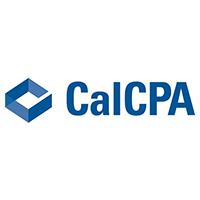
You have used Excel for years and perhaps Lotus 123 before that. And through all that time, you have repeatedly said, ?One day, I'll learn how to w...
4/24/2026 10:00am - 1:30pm | Online | CalCPA
Members: $175.00, Non-members: $230.00
CPE Categories: Specialized Knowledge & Applications (4 CPE)
You have used Excel for years and perhaps Lotus 123 before that. And through all that time, you have repeatedly said, ?One day, I'll learn how to write macros.? Finally, that time has arrived because this four-hour program will introduce you to the wide world of Excel macros and Visual Basic for Applications (VBA).
This course teaches the fundamentals of creating and working with macros in Excel and is designed specifically for those with little experience working with macros. More specifically, taking this course will teach you how to use Excel?s Macro Recorder to write simple yet effective macros. You will also learn how to secure and share macros with other Excel users and create user-defined functions to solve specific accountant-centric problems in Excel. Further, you will learn how to create macros that run when a user opens a workbook and VBA basics. Don?t miss this unique opportunity to learn how to begin working with macros ? one of Excel?s most powerful tools.
Instructor: Thomas G. Stephens Jr
CPAs and other professionals seeking to advance their knowledge on the topic.
Create a macro in Excel using the Macro Recorder tool
Manage the fundamental elements of macros in Excel, including accessing macro functionality, naming macros, shortcut keys, storing and deleting macros, absolute vs. relative cell references in macros, and macro security
Identify the usefulness of the Macro Recorder and list four critical limitations of the Macro Recorder; additionally, modify Excel?s Quick Access Toolbar and the Ribbon to provide shortcuts to macros
List the nine essential elements of macros written using Visual Basic for Applications and utilize the Visual Basic Editor; manage macros through copy/paste and delete processes
Create variables in macros and identify the purpose of branching and conditional logic routines such as IF/THEN/ELSE, DO/WHILE, and CASE
Getting started with Excel macros by using the Macro Recorder
Fundamentals of writing VBA code
Saving and sharing macros
Getting started with User-Defined Functions
None.
© Copyright 2025 KSCPA | All Rights Reserved